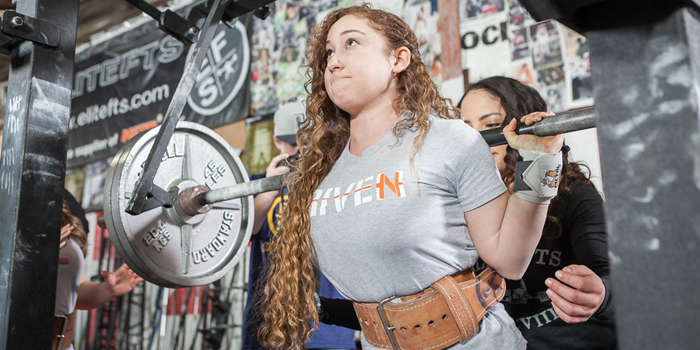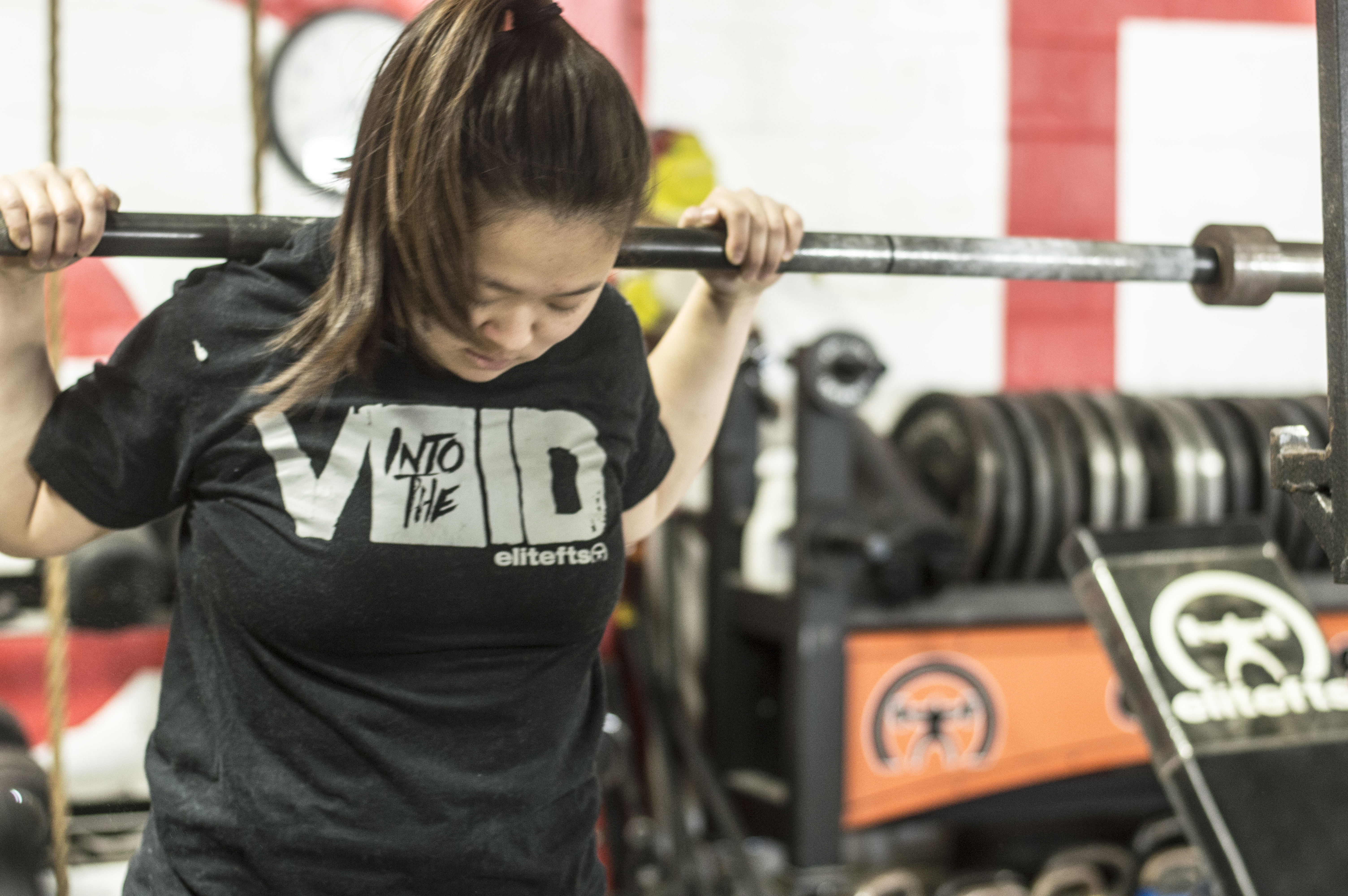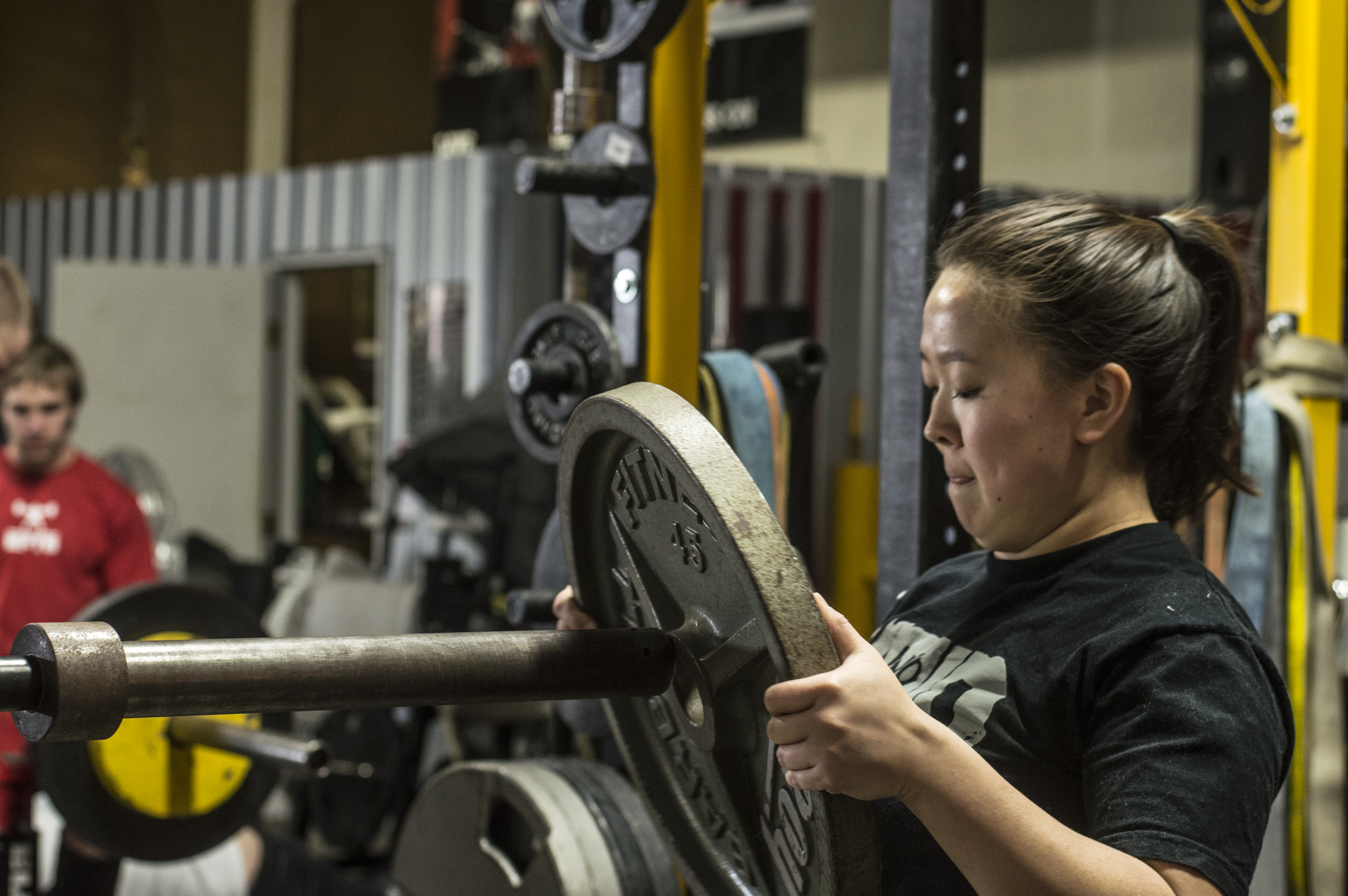
It can be hard to decide if a training program is working for you, or if it is time to move on to the next one. Heck, when it’s “kind of” working, it’s almost as hard as deciding whether or not you want to stay in or leave a relationship. If you’ve been training a long time, you probably know what I’m talking about/and or have experience the turning point in which you’re not sure if your program is the right one for you or if it’s working and you just haven’t given it the proper time for adaptations to occur. One time, coming off of a bad meet, Dave Tate told me, “Just because the meet didn’t go well, that doesn’t mean the training program was bad.” He couldn’t have been more right, as one moment rarely is indicative of how well a program worked. So for those of you that stick with programs longer than you should, and for those of you who promiscuously jump from fad program to fad program based on a program's currently popularity, this article is for you all, and everyone in-between.
The Purpose of the Training Program
The whole purpose of a training program is to apply stress as a means to get your body to undergo some sort of biological adaptation that results in something like getting bigger, stronger, fitter, or faster. However, adaptations are rarely limited by the demands of a program. Instead, they are often limited by the adaptive capabilities of the athlete/lifter who is using the program. So, while the initial purpose of your training program should be to impose types of physical loading/stress that result in you achieving those adaptations, it is critical to realize that loading and recovery are two factors that will both, concurrently, limit your ability to adapt. And thus, the optimal training program for two people is rarely the same, since an optimal program requires specific methods that are tailored to a lifter’s strengths, weaknesses, and adaptability. That being said, generic programs can work for people; however, it is important to recognize that these programs often only cater to inducing adaptation by manipulating loading and not recovery.
RECENT: The Thyroid — Regulator of Your Metabolic Fate
How Adaptations Occur in a Training Program
In a training program, stress can be considered an isolated stimulus in a training session, or its accumulation and manifestation over the training cycle2. During a training program, the latter is something we call the General Adaption Syndrome (GAS)1. GAS is a way of describing the body’s response to stress and can be divided into three phases known as “initial alarm”, “resistance”, and “exhaustion.” In terms of training, they can be described as shown below2,3:
Initial alarm: Your ability to deal with stress is temporarily reduced and stress hormones are secreted (like cortisol, norepinephrine, and epinephrine) following a training session.
Resistance: In response to the temporary reduction in your body’s ability to cope with stress, a feedback signal is intrinsically activated and allows you to resist the stressor. To do this, your body pulls energy from energy/adaption reserves. These reserves supply the energy needed to aid your body’s attempt to return to homeostasis and repair damaged muscles following a training session.
Exhaustion: This is when the body is overloaded/tired/fatigued from using its energy reserves to resist the stressor. If this were to continue without proper recovery (to “refill” those depleted energy stores) it could result in overload, burnout, adrenal fatigue, impaired performance, and/or overtraining.
Following the exhaustion phase, if recovery is sufficient, your body then adapts to the stressor/loading so that when encountered again, it no longer considered a stressor. Some call this “supercompensation” while others call it “adaptive reconstruction.” So, because your body hates stress and loves homeostasis, it adapts and gets bigger, faster, stronger, etc. It’s ironic actually; since your body is making these physical adaptations in the hope that it can be lazy in the future.
Types of Response to Stress That Can Occur in Any Training Program
Imagine three lifters embark on the same program. During that program they all experience different responses to it. Those responses could be the following3.
Lifter A (a mild alarm reaction): The loads in this program only serve as a “low grade” stressor to this lifter, and thus his initial alarm response is mild because the workload was not stressful enough to disrupt homeostasis in his or her body. As a result, the resistance stage isn’t triggered, and thus supercompensation does not occur. This lifter makes minimal, if any, adaptations from this program. There are a couple of ways to determine if you are like Lifter A and in an ineffective program. If you are looking to increase your strength, I would first stick with the program for at least three blocks, mesocycles, or months if you are not a beginner because it can take time for the accumulated effects of a strength based program to kick in (see below section on training effects). Those being said, before starting the program, take a look at the volume and loading and determine if it has what seems to be a good balance of loading/volume and recovery. If you're not sure if it is right for you, write down what has and has not worked for you in the past, and seek the advice of someone with programming experience and ask for their input. But, once you start, stick with it for a bit, because there is nothing worse than modifying programs and jumping from program to program before giving one the ability to actually exert its effects.
Lifter B (overtrained): The loads in this program are highly stressful each day and week to this lifter. Over the course of the program, he or she endures a lot of high-grade stress/loading. The training is so stressful that before the athlete/lifter can “refill” their depleted energy stores from the resistance phase, a new stressor/training session is applied. This leaves the lifter, and his or her body, in a state where stress accumulates and continuously depletes his/her energy stores before the body can adapt and supercompensate. Thus, this lifter may actually regress or watch their 1RMs decrease. I’ve actually seen this kind of thing often in lifters who were on some sort of dynamic effort/max effort split and then switch to a high volume, squat every day, type thing. To determine if this is happening to you on a program, I’d keep a log of how you feel each morning when you wake up and before/after you train. If it continuously seems like you are having a decrease in motivation to train, a loss of appetite, trouble sleeping, and irregular mood swings, the program might be leading you into a state of overtraining. While some overreaching is okay, you don't want a program to leave you overtrained. If you are experience signs of overtraining, you are probably better off stopping the program, taking some time off, and then starting one with a volume that would promote more favorable adaptations.
Lifter C (supercompensation): In this program there are highly stressful training sessions, but sufficient recovery before the next session. The loading is optimal. As a result, this lifter is able to adapt, and supercompensate to the training stress/load and gains favorable adaptations from the training program. I would change nothing and stay the course on this program. Do not get tempted to jump to more popular “fad” programs because they have a “cool” factor.
Training Effects and Their Influence on Adaptations
In a given program, it is the stress of the training sessions, or training load, that give rise to the training effect (TE). TEs are essentially determined by the training load (training volume, organization, specificity, etc). TE can be broken down into acute TEs, delayed TEs, partial TEs and cumulative TEs. The types of TE are further described below 2.
Acute TE: How the body initially reacts to loading/stress following a single session.
Delayed TE: How the body is altered following an acute training session.
Partial TE: The effects of one concentrated type of loading/stress that is targeting adaptation of one trait.
Cumulative TE: The result of the accumulation of all TEs from training; how the body generally responds to concurrently and sequentially applied stressors/loading.
Acute and delayed TEs are heavily determined by how the training is organized, and these effects are first realized by the transient response of the body to training. However, as the acute response of the body to training give rise to positive or negative effects, the accumulated short and delayed TEs (negative or positive) give rise to the cumulative TE. Thus, because TEs occur on various levels and at various amplitudes throughout a program, it can be hard to determine if a training program is working and if effects are occurring. I know, it’s complicated, but that is why understanding what the intending TE of a program is, and the conditions of the program that are prescribed to achieve that TE are, are critical in determining if a program is right for you. That is also why it is important to stick with a program for a while before switching, since training effects occur both transiently and cumulatively.
The Effects of Training and Their Residual Effects
In general, specific types of training/loading have a period of time where adaptations can occur prior to the onset of a plateau. The retention of training adaptations from specific types of loading/stress following cessation of training, or residual training effects, also are specific. And, understanding the time frame of both is important to determining if a program is working for you.
For example, if a program is focused on improving explosive strength, it tends to plateau within three to four months. The faster improvement occur, the faster the plateau arrives 2. So, if you want to know an explosive strength program is working, you are going to have to ride it out for a bit because it will be hard to tell within the first month. Maximal speed has a residual duration of about five days4, and adaptations to maximal speed training include increased phosphocreatine storage, motor control, and neuromuscular coordination.
WINNERS — 12 Weeks of Free Online Training from Team Elitefts
In aerobic training, adaptations occur early on (within a month or sooner) and continue for about two to three months before plateauing and hovering around maximum as training continues2. The residual duration of this training effect is around 30 days and should result in an increase in aerobic enzymes and increase in muscle oxidative capacity4. Decreases in the acquired adaptations from aerobic training due tend to decrease fast, as decreases in VO2max can be observed as early as a week following the cession of training. Maximal strength also has a residual effect of around 30 days, and these adaptations are marked by increase in muscle hypertrophy and neural innervation of contracting muscles4. For beginners, adaptations to maximal strength, which are neural in nature, occur quickly within the first couple of months. Those that are hypertrophy based strength gains begin to predominate in the weeks when the neural/maximal strength based adaptations plateau. For the intermediate/advanced athlete, these types of neural/maximal strength adaptations require more training complexity, as the rate of adaptation will be much slower than it is for a beginner, and will take longer to occur.
Thus, advanced and intermediate lifters need to stick with strength programs for longer periods than beginners before determining whether or not they actually worked (in general). The training effects of anaerobic-glycolytic adaptations take longer to occur, and are often achieved four months after the start of concentrated training. The residual effects last about 18 days. Specific adaptations include increases in anaerobic enzymes and increases in the capacity of the body to buffer against hydrogen ion build-up. Finally, strength endurance adaptations result in hypertrophy of oxidative fibers and increases in aerobic and anaerobic enzymes. This type of training has a residual effect of about 15 days4.
Summing It Up
In the beginning of a training program, specific homeostatic reactions occur so that energy levels can be restored and the body can adapt to the acute stressors of the initial training sessions. As this process occurs repeatedly, following multiple training bouts in a training program, adaptions start to occur and result in altered cellular and molecular structures that support the transformation of the lifters body into one that is more capable of executing the demands of the program2. Thus, you will never know if a training program is working after week one, two, or even three. So, for true long-term adaptations to occur, your body must undergo multiple stages of adaption over the course of time.
So next time, before you jump ship on program, do me a favor and ask yourself if you’ve given the program enough time to demonstrate its effectiveness. If the answer is no, do me another favor, and give it a bit more time before moving on.
References
- Selye, H. Stress and general adaptation syndrome. (jeffrey Norton,, New York,, 1964).
- Siff, M.C. & Verkhoshansky, Y.V. Supertraining : special strength training for sporting excellence : a textbook on the biomechanics and physiology of strength conditioning for all sport, (Supertraining International, Denver, 1999).
- Dietz, C. & Peterson, B. Triphasic training : a systematic approach to elite speed and explosive strength performance, (Bye Dietz Sport Enterprise, Hudson, WI, 2012).
- Issurin, V. Block periodization versus traditional training theory: a review. The Journal of sports medicine and physical fitness 48, 65-75 (2008).












